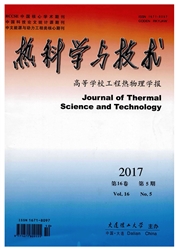

 中文摘要:
中文摘要:
主要研究了兼顾火电机组经济性与环保性的负荷优化分配算法,建立了考虑阀点效应的多目标负荷分配模型。应用自主编写的算法,获得了待决策的非支配解集合(Pareto front,PF),其中算法的核心操作是多目标融合、剔除同一层相近个体、保留不同层差异个体。给出了6台机组的负荷优化分配算例,仿真结果验证了模型的合理性,并表明方法可以进一步减少火电机组煤耗成本和污染物排放量。结合逼近理想解排序法(technique for order preference by similarity to an ideel solution,TOPSIS),讨论了不同目标权重下负荷分配方案的区别,证明了基于TOPSIS的多目标负荷分配方案的确定依赖于各自目标在决策中所占的重要程度。
 英文摘要:
英文摘要:
Mainly focuses on the algorithm of load optimal distribution with both economy and environmental protection of thermal power units,and establishes a multi-objective load distribution model taking valve point effect into account.Algorithm of autonomous writing is applied,then the to-be-decided Pareto Front(PF)is obtained.The core part of algorithm is the combination of multi-object;the removal of similar individuals at the same layer and the reservation of different individuals at different layers.The load optimal distribution examples of 6units are given in this paper.The simulation results verify the rationality of model,and show that this method can further reduce fuel cost of thermal power units and the emissions of pollutants.Finally,combines the TOPSIS theory,discusses the differences of load distribution schemes when target weight is different,proving multi-objective load distribution schemes based on TOPSIS are decided by the significance of their goals in decision making.
 同期刊论文项目
同期刊论文项目
 同项目期刊论文
同项目期刊论文
 期刊信息
期刊信息
